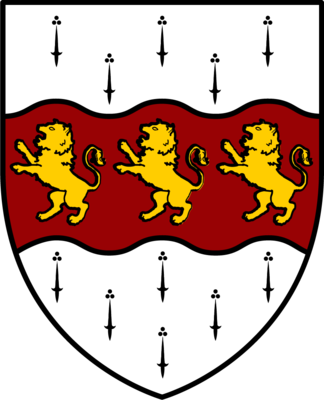
Fire Safety
Every year college and university students experience a growing number of fire-related emergencies.
There are several causes for these fires; however most are due to a general lack of knowledge about fire safety and prevention.
All Students should be familiar with the following:
- Mather is a non-smoking campus. This includes the buildings and the courtyard.
- Halogen lamps are prohibited. The University has prohibited the use of all halogen floor lamps in all House, dormitory rooms and common areas.
- Cooking equipment is prohibited. The City of Cambridge forbids cooking in any room or apartment not equipped with a permanent cooking facilities.
-
The use of candles is prohibited in House and dormitory rooms and common areas.
- Except in the case of those individual observing religious holiday. They may light candles as long as they are in House common area, only with the approval of the Masters, and only as long as they are always attended.
- Extension cords must be in good condition and of proper rating. Cord should not be spliced, run through doorways or partitions or cover with rugs.
- Emergency exit doors within rooms/suites shall not be blocked on either side by furniture or obstruction of any kind.
- Any abuse of, or tamper with, fire alarm, smoke detectors, sprinkler system or extinguisher is strictly forbidden.
- Students must evacuate during all fire alarms. A DELAYED evacuation could result in you becoming trapped or seriously injured.
- Fire hazards should be routinely reported to Building Manager.
- Knowledgeable of the locations of fire pull stations, primary and secondary emergency exits, designated meeting locations outside.
- Importance of keeping fire doors closed. Unless protected by open devices that allow the door to close if the alarm goes off.
- Not to use elevators in a fire emergency.
Cooking Fire Safety
Cooking related fires are the leading cause of fires at colleges/universities in Massachusetts.
Short links on basic cooking fire safety and what to do if a fire. There are five (5) videos - approximately 2 minutes in duration.
EMERGENCY NUMBERS
|
Harvard University Police Department |
(617) 495-1212 |
|
Cambridge Police, Fire & Medical |
911 |
|
University Operations Center |
(617) 495-5560 |
If the building’s fire alarm is activated and you can safely exit your room – move quickly to the closest EXIT.
Get out and Stay out!!!
Emergency Procedures & Fire Equipment
Low-Rise Evacuation: The low-rise has two primary evacuation routes. From the low-rise common rooms, you can exit through the main corridors. If the main corridor directly outside of your common room is engulfed in smoke, exit through the bathroom corridor (or through interconnecting fire doors) to another suite’s common room and out the main corridor. By proceeding through the bathrooms and fire doors, residents can reach the stairwell exits. An additional fire exit is located between suites 412 and 413 on the fourth floor; it exits into the Mather/Dunster area.
Tower Evacuation: In the tower, each suite has two means of exit in case of an emergency: into the elevator lobby and into the stairwell. Tower occupants should evacuate into the nearest and safest stairwell. Use the elevator lobby only as an egress to another stairwell should the nearest one be engulfed in smoke.
[NOTE: Never use the elevators for emergency evacuation.]
Low-Rise Firefighting Equipment: The low-rise is equipped with dry chemical-type, portable fire extinguishers for putting out small fires. These extinguishers are located in the main corridors on the third and fourth floors. In addition, the low-rise is protected by a wet-sprinkler system.
[NOTE: Do not tamper with the stand-pipe system in the main corridors; it is for the Fire Department’s use only.]
Tower Firefighting Equipment: The tower has dry chemical-type, portable fire extinguishers in the entry area of each suite. In addition, the tower is protected by a wet-sprinkler system, which includes the vestibule.
[NOTE: Do not tamper with the stand-pipe system in the main corridors; it is for the Fire Department’s use only.]
1) Any abuse of, tampering with, or relocation of fire alarms, fire extinguishers (portable or fixed), or smoke detectors is strictly forbidden.
2) Emergency exits and fire doors must be kept clear on both sides.
3) Nothing should be hung from the sprinkler system pipes in the tower.
4) Flammable liquids are not permitted in the House.
Fire Procedures
In case of fire, follow these steps:
Step 1. Attempt to extinguish the fire only if it is minor and the effort does not endanger anyone’s safety.
Step 2. If the fire is not easily and immediately extinguished, pull the alarm station nearest the fire.
Step 3. Upon hearing the alarm, all occupants should evacuate the building by the shortest and safest route. If you know the location of the fire, please notify the Building Manager and/or firefighters upon exiting the building.
